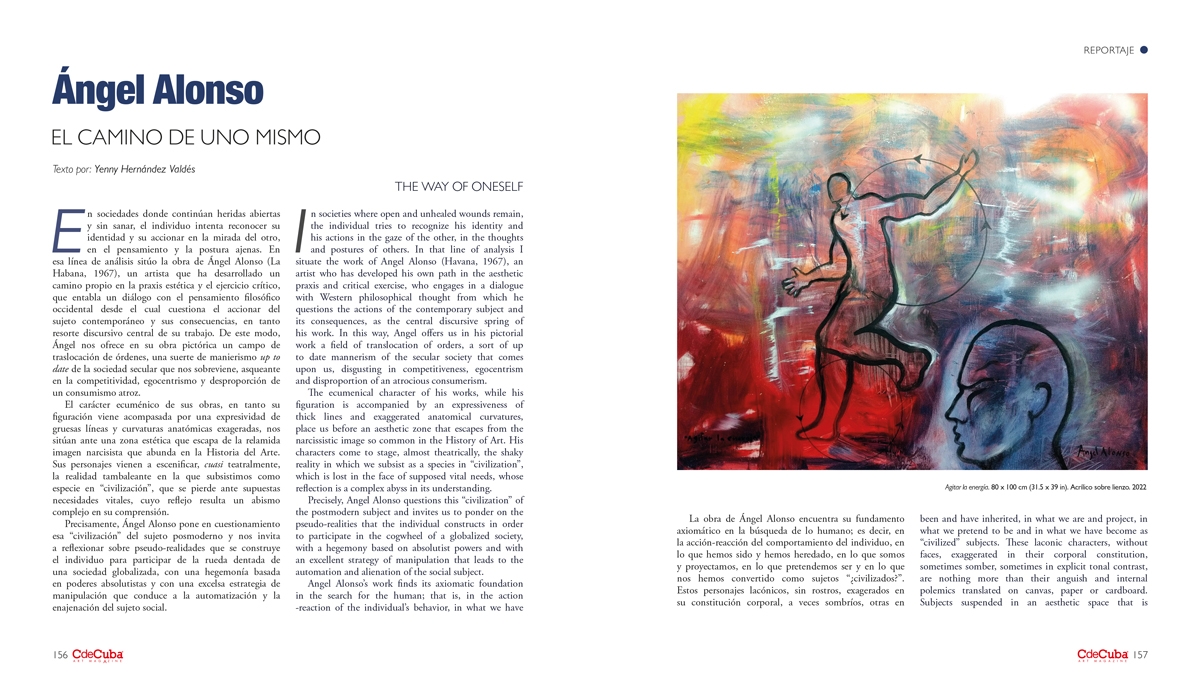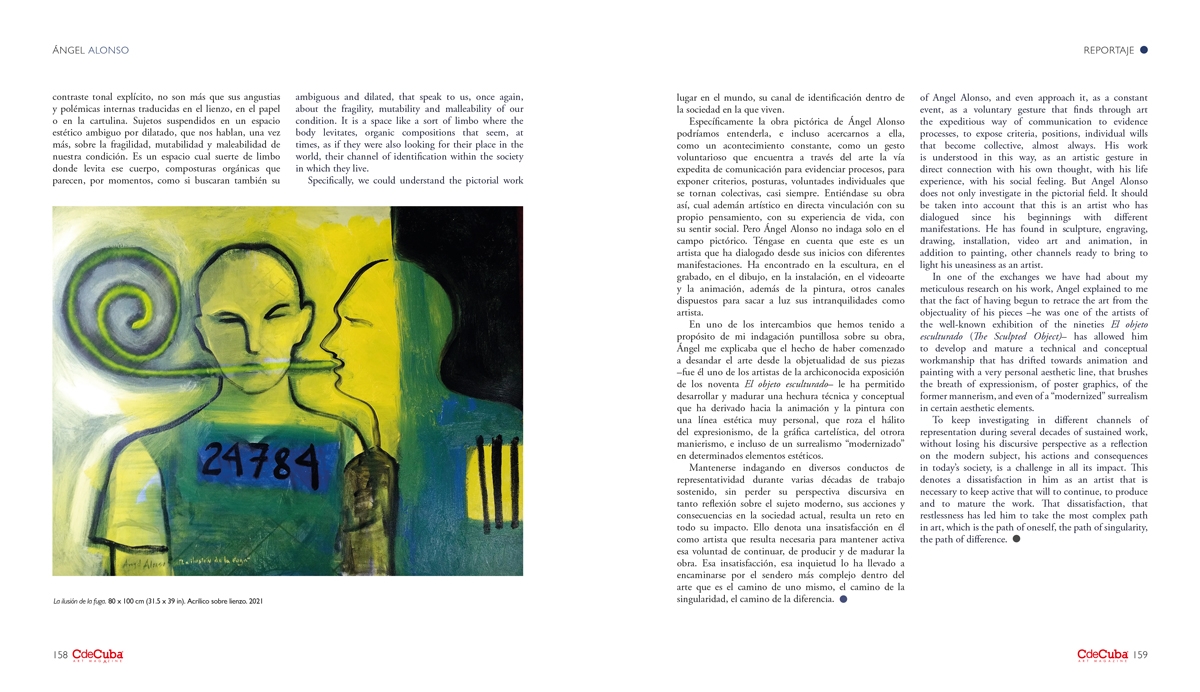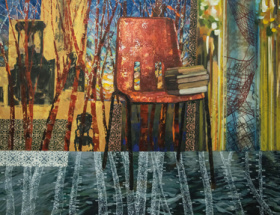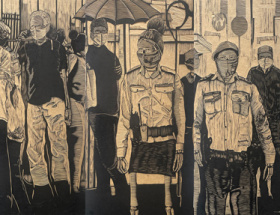The Way of Oneself
By Yenny Hernandez Valdes
In societies where open and unhealed wounds remain, the individual tries to recognize his identity and his actions in the gaze of the other, in the thoughts and postures of others. In that line of analysis I situate the work of Angel Alonso (Havana, 1967), an artist who has developed his own path in the aesthetic praxis and critical exercise, who engages in a dialogue with Western philosophical thought from which he questions the actions of the contemporary subject and its consequences, as the central discursive spring of his work. In this way, Angel offers us in his pictorial work a field of translocation of orders, a sort of up to date mannerism of the secular society that comes upon us, disgusting in competitiveness, egocentrism and disproportion of an atrocious consumerism.
The ecumenical character of his works, while his figuration is accompanied by an expressiveness of thick lines and exaggerated anatomical curvatures, place us before an aesthetic zone that escapes from the narcissistic image so common in the History of Art. His characters come to stage, almost theatrically, the shaky reality in which we subsist as a species in “civilization”, which is lost in the face of supposed vital needs, whose reflection is a complex abyss in its understanding.
Precisely, Angel Alonso questions this “civilization” of the postmodern subject and invites us to ponder on the pseudo-realities that the individual constructs in order to participate in the cogwheel of a globalized society, with a hegemony based on absolutist powers and with an excellent strategy of manipulation that leads to the automation and alienation of the social subject.
Angel Alonso’s work finds its axiomatic foundation in the search for the human; that is, in the action-reaction of the individual’s behavior, in what we have been and have inherited, in what we are and project, in what we pretend to be and in what we have become as “civilized” subjects. These laconic characters, without faces, exaggerated in their corporal constitution, sometimes somber, sometimes in explicit tonal contrast, are nothing more than their anguish and internal polemics translated on canvas, paper or cardboard. Subjects suspended in an aesthetic space that is ambiguous and dilated, that speak to us, once again, about the fragility, mutability and malleability of our condition. It is a space like a sort of limbo where the body levitates, organic compositions that seem, at times, as if they were also looking for their place in the world, their channel of identification within the society in which they live.
Specifically, we could understand the pictorial work of Angel Alonso, and even approach it, as a constant event, as a voluntary gesture that finds through art the expeditious way of communication to evidence processes, to expose criteria, positions, individual wills that become collective, almost always. His work is understood in this way, as an artistic gesture in direct connection with his own thought, with his life experience, with his social feeling. But Angel Alonso does not only investigate in the pictorial field. It should be taken into account that this is an artist who has dialogued since his beginnings with different manifestations. He has found in sculpture, engraving, drawing, installation, video art and animation, in addition to painting, other channels ready to bring to light his uneasiness as an artist.
In one of the exchanges we have had about my meticulous research on his work, Angel explained to me that the fact of having begun to retrace the art from the objectuality of his pieces –he was one of the artists of the well-known exhibition of the nineties El objeto esculturado (The Sculpted Object)– has allowed him to develop and mature a technical and conceptual workmanship that has drifted towards animation and painting with a very personal aesthetic line, that brushes the breath of expressionism, of poster graphics, of the former mannerism, and even of a “modernized” surrealism in certain aesthetic elements.
To keep investigating in different channels of representation during several decades of sustained work, without losing his discursive perspective as a reflection on the modern subject, his actions and consequences in today’s society, is a challenge in all its impact. This denotes a dissatisfaction in him as an artist that is necessary to keep active that will to continue, to produce and to mature the work. That dissatisfaction, that restlessness has led him to take the most complex path in art, which is the path of oneself, the path of singularity, the path of difference.





